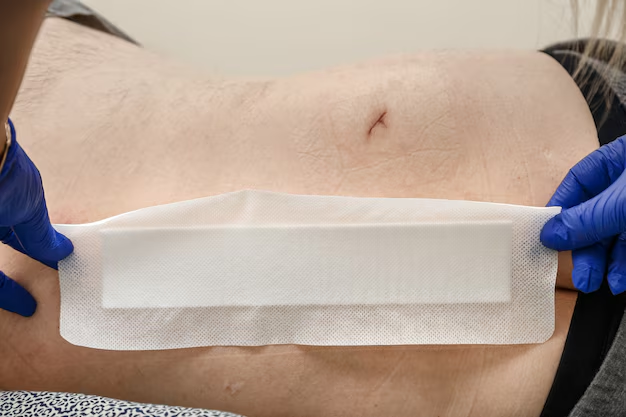Understanding Shingles: Is There a Test to Diagnose This Condition?
Shingles, also known as herpes zoster, is more than just an unpleasant rash; it's a condition that underscores the complexity of viral infections. If you've ever wondered whether there is a reliable test for shingles, you're not alone. In this comprehensive article, we will delve into the details of diagnosing shingles, understanding its causes, symptoms, and exploring the testing options available. Our goal is to equip you with knowledge so you can make informed decisions if you suspect you have shingles.
What Causes Shingles?
Shingles is caused by the varicella-zoster virus (VZV), the same virus responsible for chickenpox. After recovering from chickenpox, the virus remains dormant in your body, residing in nerve tissue near your spinal cord and brain. For reasons not entirely understood, the virus can reactivate years later, leading to shingles. Factors believed to contribute to this reactivation include:
- Age: Older adults, particularly those over 50, are more prone.
- Weakened immune system: Conditions or treatments that affect immunity, such as cancer therapies or organ transplants, can increase risk.
- History of chickenpox: Everyone who has had chickenpox can potentially develop shingles.
Symptoms to Watch For
Recognizing the symptoms of shingles is crucial because early detection can mitigate complications. Common signs include:
- Pain and burning: Often the first symptom, pain can occur even before a rash appears.
- Red rash: Typically develops a few days after the pain and usually appears on one side of the body.
- Blisters: These fluid-filled blisters can break open and crust over.
- Itching: Alongside pain, itching can occur in the affected area.
Other symptoms might include fever, headache, fatigue, and sensitivity to light. Monitoring these signs closely can prompt timely discussion with a healthcare provider.
Is There a Test for Shingles?
Clinical Diagnosis: The First Step
For many individuals, shingles can be diagnosed based on a clinical evaluation. Trained healthcare professionals often identify shingles by examining the distinctive pattern of the rash and considering the patient's medical history. Pain and the appearance of the rash generally provide strong indicators for a healthcare provider to make a clinical diagnosis.
Laboratory Tests: When Are They Used?
Although a clinical diagnosis is often sufficient, certain situations may necessitate laboratory testing:
- Atypical Symptoms: If symptoms do not clearly indicate shingles, laboratory tests help confirm the diagnosis.
- Severe Cases: For cases that present potential complications, such as those affecting the eyes, tests may be more frequently used.
Types of Laboratory Tests
Virus Culture: A sample from a blister can be cultured to grow the virus. However, this is not commonly used due to the time it takes and potential for false negatives.
Polymerase Chain Reaction (PCR): This is a molecular test that detects the virus’s DNA from blister samples, blood, or cerebrospinal fluid. PCR is highly sensitive and specific, making it a preferred tool for diagnosing complex cases.
Direct Fluorescent Antibody (DFA) Test: This test detects VZV proteins in a blister sample and is quicker than a culture but requires a skilled technique to ensure accuracy.
These tests, while helpful, are generally reserved for specific conditions due to their cost and availability. A significant number of shingles cases are confirmed through clinical observation without the need for laboratory tests.
Treatment Considerations
Understanding whether you have shingles is only part of the equation; knowing what to do about it is equally important. Treatment typically involves:
- Antiviral Medications: Medicines such as acyclovir, valacyclovir, or famciclovir can help shorten the duration and severity if started early.
- Pain Relief: Over-the-counter pain relievers, prescription medications, or topical ointments can help manage discomfort.
- Home Remedies: Cool baths and wet compresses may provide soothing relief to irritated skin.
These treatments aim to alleviate symptoms and reduce the risk of complications, such as postherpetic neuralgia, a condition characterized by lingering pain post-recovery.
Prevention: Reduce Your Risk
While shingles can’t be entirely prevented, measures exist to lower your risk:
Vaccination: The shingles vaccine, recommended for adults 50 and older, significantly reduces the chance of developing the condition and can lessen the severity if you do contract it.
Health Maintenance: Keeping your immune system strong through healthy lifestyle choices, including adequate sleep, nutrition, and stress management, can also help.
Vaccination remains the most effective tool, providing peace of mind and reducing overall health risks.
When to Seek Medical Advice
Given that shingles can have significant health impacts, understanding when to seek medical advice is crucial:
- Persistent Pain: If the pain associated with a potential shingles rash persists or intensifies.
- Eye Issues: Blisters near the eyes present a risk of severe ocular complications and necessitate urgent care.
- Widespread Rash: If the rash spreads beyond a localized area, or if it appears virulent, prompt evaluation is necessary.
Healthcare providers can offer guidance, start treatment promptly, and help prevent complications.
Key Takeaways: Navigating Your Health Journey
Understanding shingles, from its causes to its diagnosis and prevention, equips you with vital knowledge. Whether you're considering the role of laboratory tests, the importance of early treatment, or exploring vaccination options, being informed benefits your overall health strategy. Remember to consult with healthcare professionals to personalize advice based on your unique health needs.
Quick Reference Summary 📋
- Symptoms to Watch: Pain, burning, red rash, blisters, itching.
- Testing Options: Clinical evaluation, PCR tests, DFA tests.
- Treatments Available: Antivirals, pain relief, soothing remedies.
- Preventative Measures: Shingles vaccine, maintain strong immunity.
- When to Seek Help: Persistent pain, eye complications, widespread rash.
By understanding shingles comprehensively, you empower yourself with the tools to manage your health proactively. 🩺
